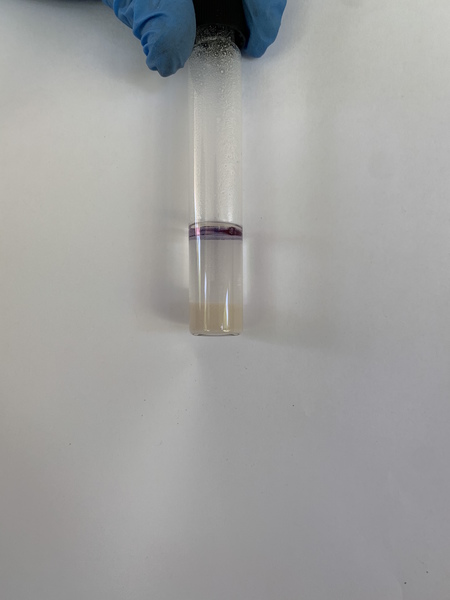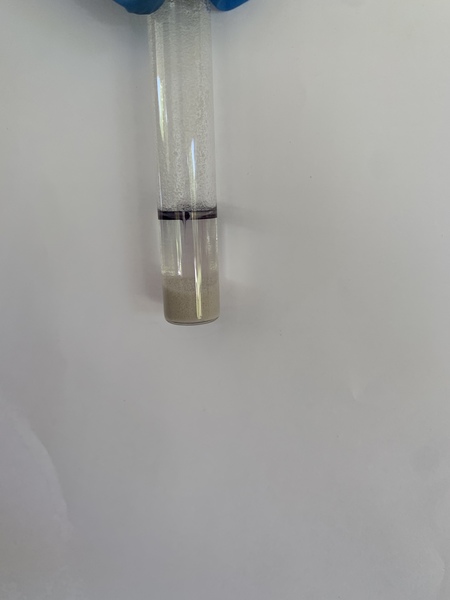We are testing the soil for petroleum hydrocarbons in our neighborhood using the Hanby soil testing kit. The instructions are easy to follow but there is not any information about how to collect the soil sampling. We would like to know what we should consider when choosing the location for collecting the soil, how far down should we dig to collect the sample, and anything else we may not be thinking to ask. Thanks
Not sure if you've seen some resources that were posted here: https://publiclab.org/n/18505
From that page: If you are you trying to get baseline data about the soil contaminant levels, a good strategy would be to take individual samples from various locations on site, taken from various depths. If you are wanting to grow food in the soil and want to check for lead and other contaminant levels, you'd want to take samples from 2-14 inches deep, because that is the depth of the roots of most vegetables you would grow.
There are some more tidbits that may be useful, further down under What is your sampling strategy?
Thanks to @DanielleS for contributing these resources!
Is this a question? Click here to post it to the Questions page.
Thank you @joyofsoy! @CherokeeConcernedCitizens, what other questions are you wondering about? Sending you good luck!
Is this a question? Click here to post it to the Questions page.
Reply to this comment...
Log in to comment
Questions: 1) Which solutions (low or high) should we use for our soil testing? 2) What is the difference between the two solutions? 3) How do we select the photograph to compare our results against? 4) What do the results mean? At what level is it considered dangerous? 5) Do you know how to use the Hanby app?
We completed our first sample. We tested the same sample of dirt twice - once with low solution and the other high solution without really understanding the difference. It is not clear to us which we should be using. We took a sample of dirt from about 3 ft. on residential property located near Chevron Refinery, Gulf LNG terminal, and BP gas processing plant in Pascagoula, Mississippi.
Here are the pictures of the results. It is also not clear what it means. We are not sure which photograph to compare the results to. Additionally, we are not sure what the results mean. And thus, not sure if they warranted more tests. We downloaded the app for assistance but couldn't log into it. It is not clear where to create an account to get the log-in information needed to access the app fully.
Here is a picture of the high solution sample. Mobile Crude oil is my best guess for which compare it to but not sure, but Chevron does also make gasoline and diesel fuel products.
Here is the picture from the low solution sample. I have no idea in this case which photograph to compare.
Is this a question? Click here to post it to the Questions page.
Hi Great questions. I'm going to tag in @DanielleS and @bronwen who have some experience using this kit!
Hi @CherokeeConcernedCitizens
the high vs low is about the level of contamination you expect. so if you were on a site there was an oil spill say, then use the high one. if on a residential site near an oil refinery, I would use the low one.
after you have added the reagents and shaken it up, you can compare the color by holding it up against the guidebook they should have sent you. we found it helpful to take a picture with a cell phone of the vial held up against the closest match you can find in the book. the cell phone pic made it easier for the eye to see the color match.
Hanby also has a mobile app- you take a photo and crop--the app will look at its library of known contaminants. Here is a video walk through of how the Hanby Mobile App works: https://youtu.be/i2dyMhup9E4__
(We wrote a how to use the handby kit here in case its helpful, it includes a video and a link to download an app that helps you identify the contaminant levels: https://publiclab.org/notes/DanielleS/03-11-2019/how-to-use-a-hanby-kit-to-test-for-soil-petroleum-hydrocarbons)
then interpretting the results and what levels of each contaminant are considered ok- here's some info about that, with a table with the different concentrations of each contaminant: https://publiclab.org/notes/DanielleS/04-12-2019/how-to-interpret-soil-test-results
I'd be happy to talk about this over zoom or phone if you want too :) If you have a need for soil metal testing too I can do that for free through the lab I am in.
Thank you @DanielleS, great to hear from you! Also great to learn about your lab's soil metal testing capabilities.
Id also like to add, before conducting more sampling and testing, its important to reflect on the reason for your concern. Do you want to grow a garden? are you interested in a general overview - if there is contamination and what it may be. Is this an area where there are children playing? The hanby kit only tests for PAH's .. metal testing may be of interest to you too..lead.. arsenic..?? so so important to sample areas that folks are potentially exposed to. what is your inquiry question ?
Is this a question? Click here to post it to the Questions page.
Thank you Jackie for putting a finer point on it, as always! <3
Reply to this comment...
Log in to comment